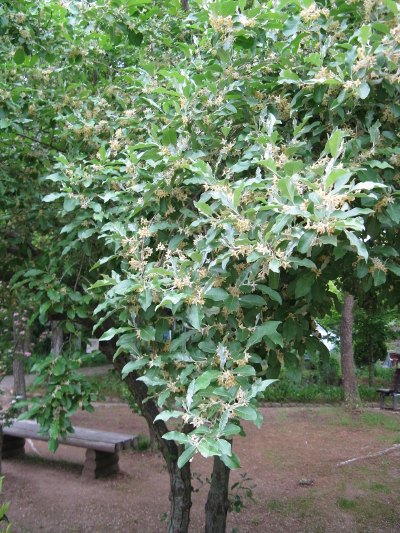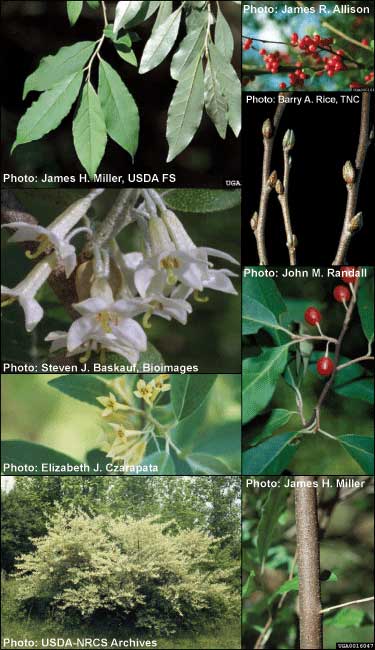autumn olive tree identification
Leaves are alternate oval to lanceolate and untoothed. Stems are speckled often with thorns.

How To Identify And Remove Autumn Olive Youtube
Autumn Olive Elaeagnus umbellata Thunberg Russian Olive Elaeagnus angustifolia L Description Autumn olive is a deciduous shrub or small tree in the Oleaster family.

. A slow-growing deciduous shrub that produces fragrant silvery-white to yellow flowers from February to June and many red berries from August to November. Autumn olive Elaeagnus Oleaster Japanese silverberry. Tube- or bell-shaped fragrant and borne in leaf axils.
The autumn olive shrub is easy to identify when it is in flower or once the fruits have matured. The underside of the dark green leaf is covered with silver-white scales. The twigs and branches are covered with small silvery to rust colored scales and short spur twigs often have a spine at the end.
It has a gray-green hue when seen from a distance. Gray fibrous bark of autumn olive. Elaeagnus umbellata autumn olive berry and Elaeagnus multiflora goumi berry are also in this family.
It was introduced to North America in 1830 as an ornamental plant. The plant may grow to a height of 20 feet. Simple alternate small elliptical or oval 13 inches long about 1 inch wide.
Their margins are wavy but do not have teeth. Autumn Olive Elaeagnus umbellata Thunberg Description Autumn olive is a deciduous shrub or small tree in the Oleaster family. In Indiana as in the rest of the country autumn olive was often used for the revegetation of disturbed habitats.
Its form is rounded with dense branches. It was commonly planted for wildlife food and cover. Autumn olive is similar in appearance to russian olive but russian olive has leaves that are much more.
Both were introduced for landscaping roadbank. Elaeagnus angustifolia commonly called Russian olive is native to Europe and Asia and is a riparian tree in the Elaeagnaceae family. Autumn Olive Identification.
Autumn olive Elaeagnus umbellata Thunb is a large deciduous shrub capable of forming dense thickets in West Virginia pastures. Asia Munger 2003 Date of US. It grows rapidly and can reach a height of 20 feet.
It was introduced to North America in the 1800s and is native to eastern Asia. Bloom in late spring. From Asia in 1800s planted widely in 1950s for erosion control.
AUTUMN OLIVE Elaeagnus umbellata RUSSIAN OLIVE Elaeagnus angustifolia IN BRIEF Closely-related Autumn olive and Russian olive grow as shrubs or small trees. Tubular 4-petaled flowers of autumn olive. Leaves are alternate oval to lanceolate and untoothed.
The leaves have a dintinctive silver underside. Spring-blooming cream or yellow flowers have a strong fragrance and abundant red berries are lightly speckled and easily seen in the fall. Grayish green leaves with silvery scales bottom side gives off shimmery look.
Autumn Olive Tree Fast Facts. Autumn olive is a large deciduous shrub that grows up to 20 tall and is frequently equal in height and width. Silvery or golden brown with speckles.
They are bright green above. Autumn olives leaves are alternate and oval with finely pointed tips. How to identify autumn olive.
It was first introduced to United States from Japan in 1830. Introduced as an ornamental. It has dark green alternate leaves that are oval to lance shaped with smooth wavy margins.
The plant may grow to a height of 20 feet. Molly OBoyle Fairfax Master Gardener talks all about Autumn Olive Elaeagnus umbellata Thunb why its invasive how to identify and remove it and more. Autumn olive Elaeagnus umbellata ELUM is a bushy leafy shrub native to Asia.
Russian olive is a medium-sized deciduous tree that is drought-resistant. Autumn Olive is a deciduous shrub that can grow quite tall. Autumn olive is a deciduous shrub or small tree growing up to 6 m 20 ft in height and 9 m 30 ft in width.
Large shrub or small deciduous tree can grow up to 20 feet tall with gray to silver foliage. Autumn olive is a small rounded tree or shrub that can reach 20 feet in height. Its range is from the Himalayas to Japan.
Its range is from the Himalayas to Japan. Woody invasive shrubs that have a silvery cast and conspicuous red berries. Invasive Species - Elaeagnus umbellata Restricted in Michigan Autumn olive is a deciduos shrub that can grow to 20 feet high.
It has also been sold commercially for roadsides landscaping and gardens. Autumn Olive Russian Olive Autumn olive branch. The young twigs are silvery with brownish scales giving the twigs a highly textured appearance.
Cultivated for wildlife habitat and erosion control Fordham et al. Autumn olive Elaeagnus umbellata is a flowering tree that is native to eastern Asia. Identification of Autumn Olive.
Autumn olive is native to China Korea and Japan. Autumn olive is found in. For wildlife food and erosion control.
A woody shrub that may reach up to 20 feet in height with yellow to cream colored flowers that appear in the spring and bunches of red berries that appear in the early fall. It may or may not have a central trunk. With age the twigs take on the light gray appearance of the main stem.
Its leaves are bright green on top and distinctively silver underneath. Elaeagnus umbellata usually grows as a shrub with a widely spreading crown. The bark on the main stem is thin and light gray.
Autumn olive leaves are dark green on top and silver-gray on the underside lance-shaped or elliptic with entire wavy margins. Autumn olive Elaeagnus umbellata is a nitrogen-fixing shrub or small tree native to East AsiaIt was introduced into North America in the 1830s. It can grow up to 15 feet high.
This shrub is native to Asia and was introduced into the US. Silver-gray on underside and dark green on top. Before it was labeled a noxious weed autumn olive was often described as fragrant in flower and as stunning in fall.
The underside of the dark green leaf is covered with silver-white scales. It can reach 12-15 feet in height. This shrub with scattered thorny branches can grow 3 to 20 feet tall.
1830 Munger 2003 Means of Introduction. A deciduous shrub with white flowers in spring and bright red berries in fall autumn olive Elaeagnus umbellata originally came from Asia and was widely planted in the US.
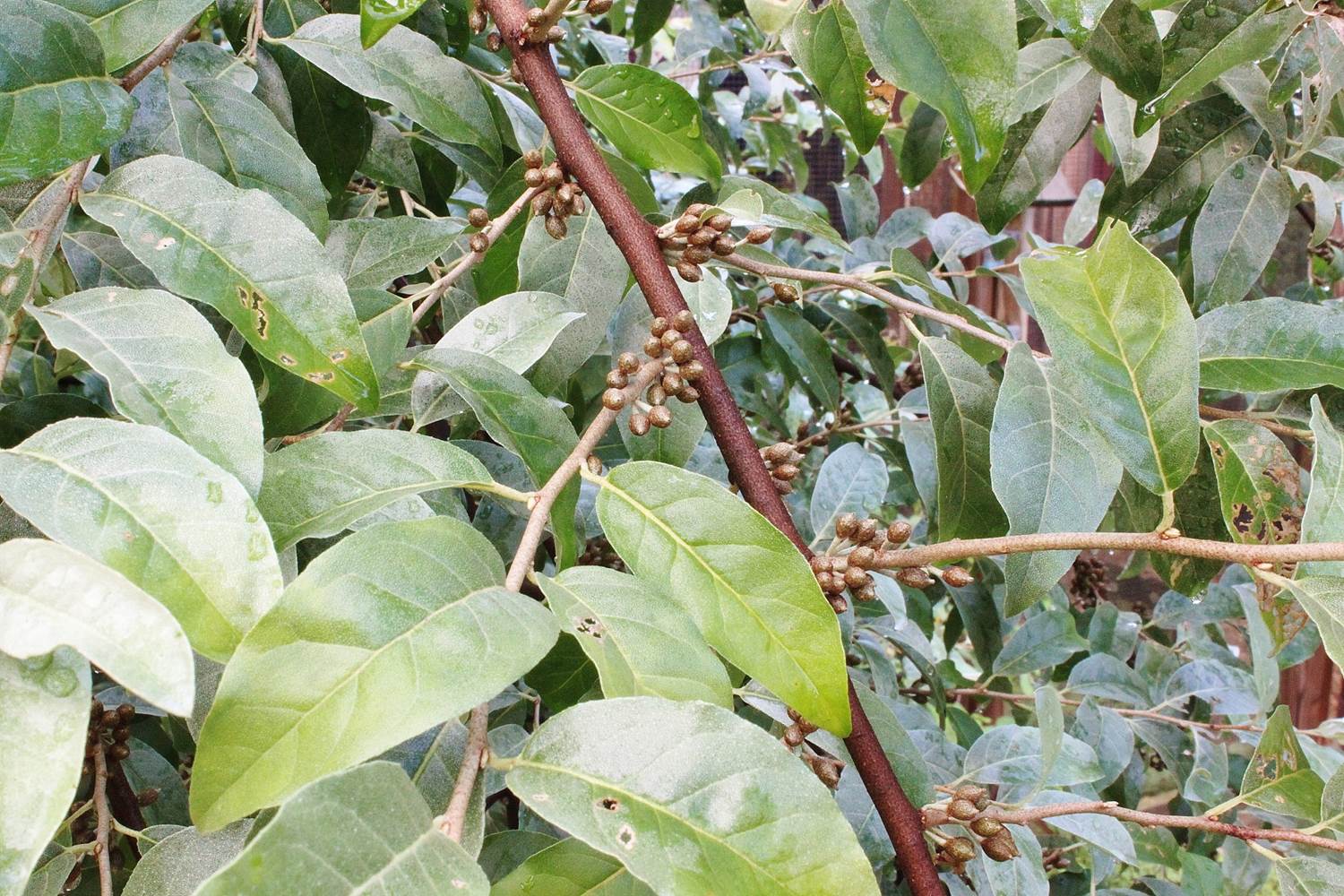
Autumn Olive Foraging For Autumnberries
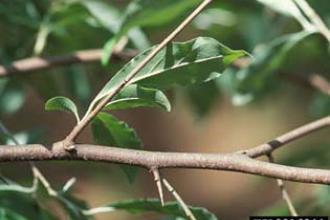
Autumn Olive National Invasive Species Information Center

Autumn Olive Nonnative Invasive Plants Of Southern Forests A Field Guide For Identification And Control

Foraging For Autumn Olives How To Identify Edible Wild Autumnberries Good Life Revival
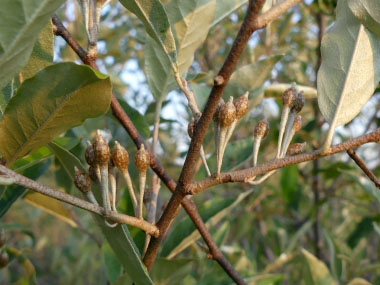
Autumn Olive Identification Leaves Bark Habitat Elaeagnus Umbellata
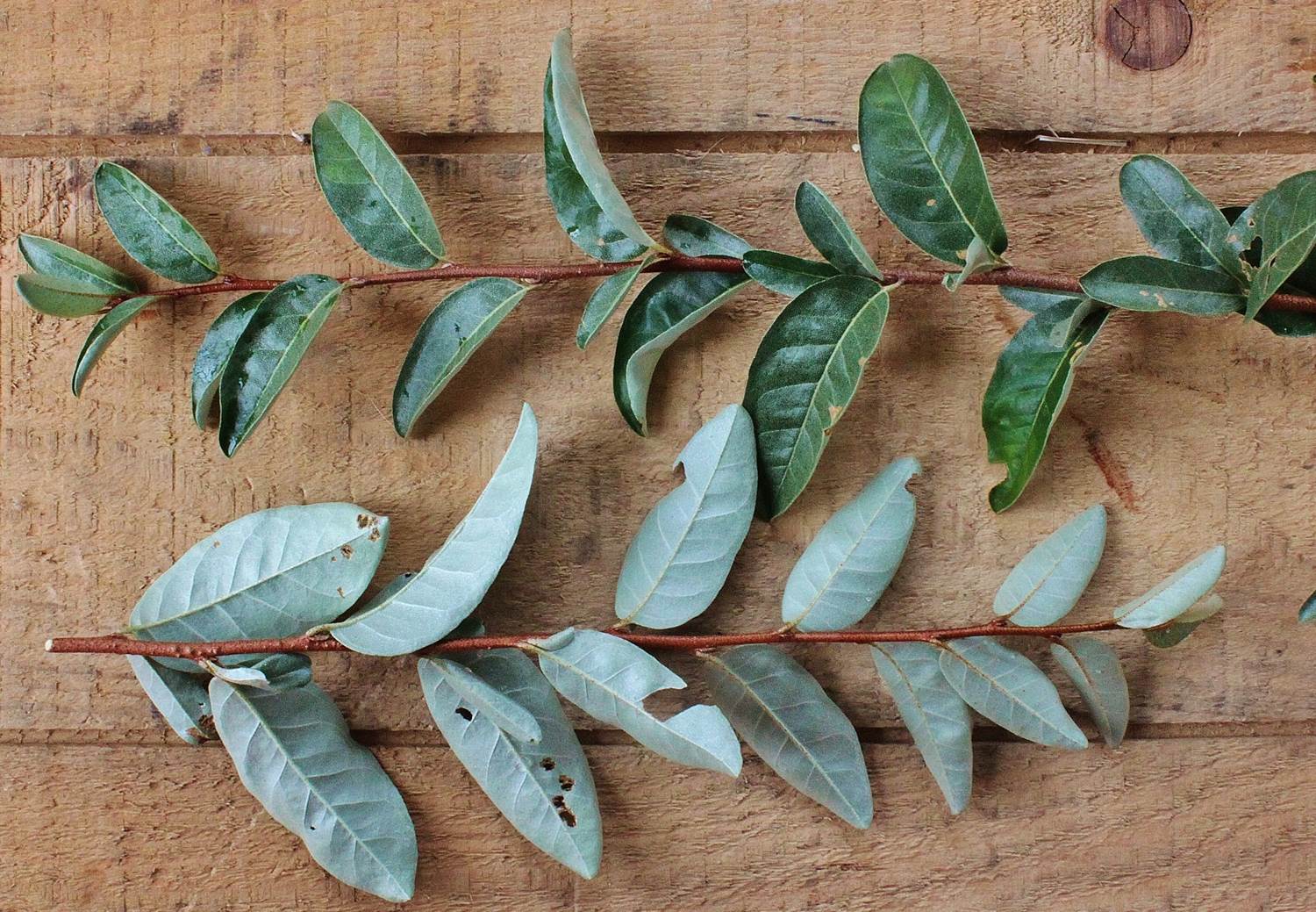
Autumn Olive Foraging For Autumnberries
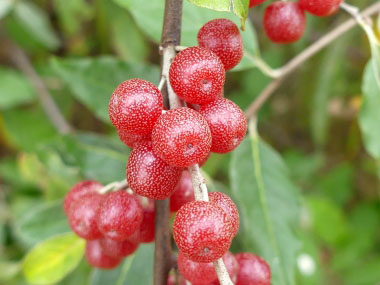
Autumn Olive Identification Leaves Bark Habitat Elaeagnus Umbellata
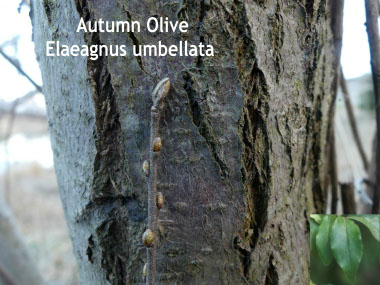
Autumn Olive Identification Leaves Bark Habitat Elaeagnus Umbellata
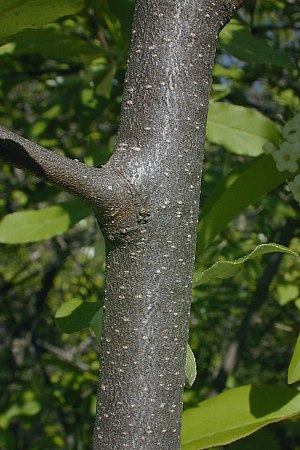
Autumn Olive Elaeagnus Umbellata

Autumn Olive Invasive Species How To Control It

Autumn Olive Invasive Species How To Control It
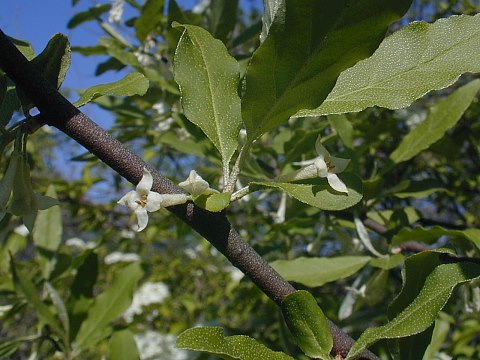
Autumn Olive Elaeagnus Umbellata
Invasive In The Spotlight Autumn Olive Extension
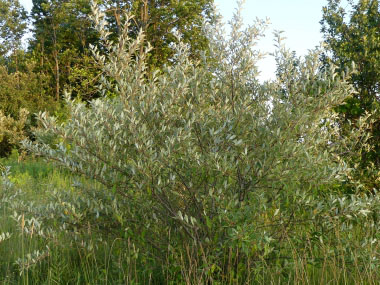
Autumn Olive Identification Leaves Bark Habitat Elaeagnus Umbellata

Autumn Olive Japanese Silverberry Mdc Teacher Portal
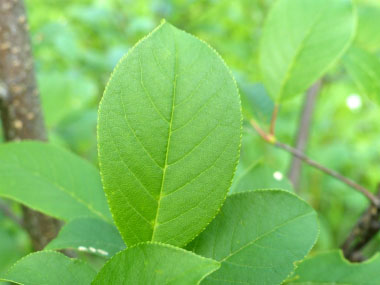
Autumn Olive Identification Leaves Bark Habitat Elaeagnus Umbellata

Autumn Olive Nonnative Invasive Plants Of Southern Forests A Field Guide For Identification And Control
